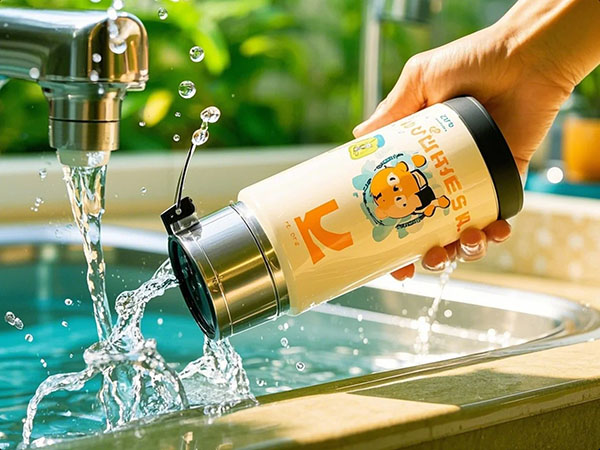In student life, stainless steel insulated cups have become nearly essential items. Whether it's a warm cup of milk in the morning or a thermos of tea between classes, these bottles provide reliable temperature maintenance throughout the day. However, proper usage and cleaning are often overlooked by students, which can not only affect beverage taste but also potentially harbor bacteria and create health risks. Therefore, understanding and implementing proper cleaning and maintenance practices for student stainless steel insulated cups is critically important.
First and foremost, we must recognize that cleaning an insulated cup isn't just about maintaining its exterior appearance - it's fundamentally about interior hygiene. Due to their excellent sealing capabilities, any leftover food particles or beverage residues can easily become breeding grounds for bacteria if not properly cleaned. For this reason, the bottle should be cleaned promptly after each use.
Special attention must be paid to cleaning the bottle cap and sealing ring, as these components are particularly prone to accumulating residues and bacterial growth. For thorough cleaning, disassemble these parts and soak them in warm, soapy water for a short period. Then use a soft-bristled brush or toothbrush to carefully clean every crevice, ensuring no areas are missed.

Students should also develop proper usage habits with their insulated cups: avoid storing strongly acidic or alkaline beverages for prolonged periods as these may corrode the stainless steel surface; don't expose the bottle to extreme heat or humidity, which could compromise its insulation properties and lifespan and never store expired beverages in the bottle, as this promotes bacterial growth.
After cleaning, rinse the bottle thoroughly to remove all traces of cleaning solution. Then dry all components completely with a clean, dry cloth - including the interior, exterior, cap, and sealing ring - to prevent water spots, stains, or unpleasant odors. Finally, store the bottle in a well-ventilated, dry location to avoid moisture-related damage.
Beyond routine cleaning and maintenance, students should periodically inspect their bottles for any signs of damage. If cracks, dents, or other structural issues are found, the bottle should be replaced immediately to prevent potential safety hazards. Similarly, if the bottle's insulation performance noticeably declines, this may indicate vacuum layer failure, also warranting replacement.
In conclusion, proper cleaning and maintenance of student stainless steel insulated cups should never be overlooked. Only through conscientious care can these bottles maintain optimal performance and provide safe, healthy hydration solutions. Let's start cultivating good cleaning habits today, transforming our insulated cups into true allies for healthy student life.